A Bracteate (from the Latin bractea, a thin piece of metal) is a thin single-sided gold medal with a stamped or repoussé decoration based on ancient Roman and Byzantine coins.
They were doubtless the most curious and interesting types of coins among the pfennigs of the German Middle Ages.
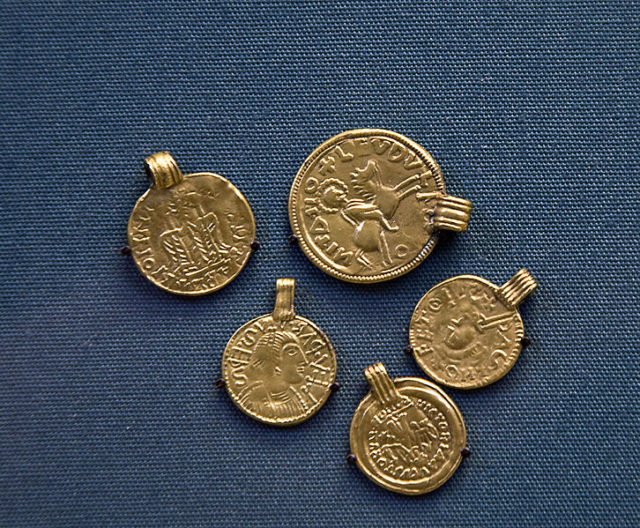 Produced in Northern Europe predominantly during the Migration Period of the Germanic Iron Age. Photo Credit
Produced in Northern Europe predominantly during the Migration Period of the Germanic Iron Age. Photo Credit
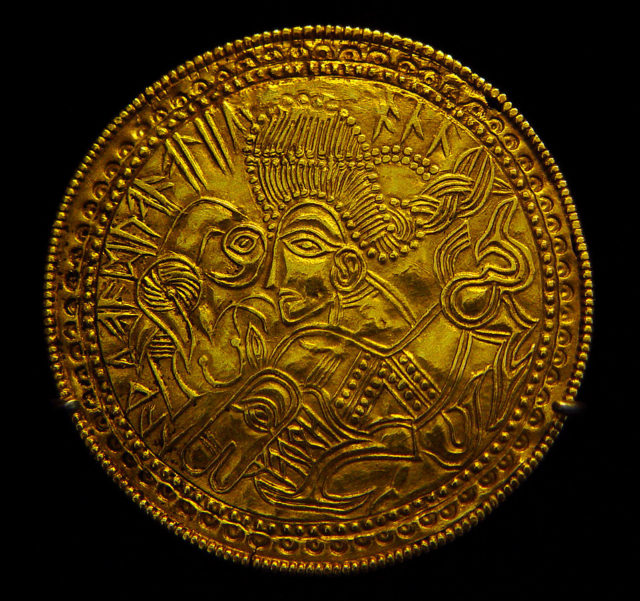 Bracteate DR BR42 bearing the inscription Alu. Photo Credit
Bracteate DR BR42 bearing the inscription Alu. Photo Credit
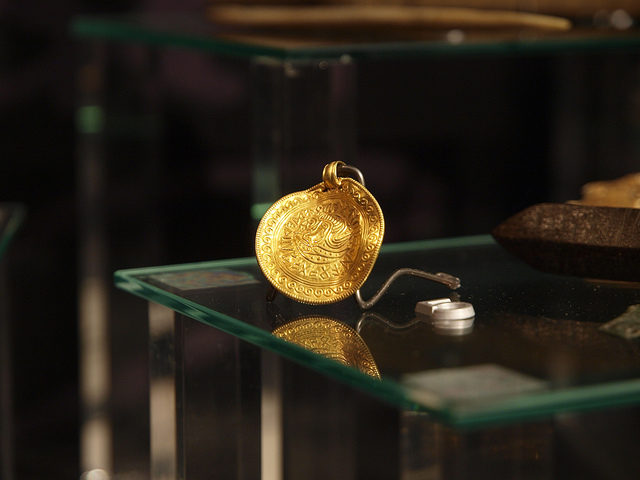 Thin, uni-faced coins, struck with only one die. Photo Credit
Thin, uni-faced coins, struck with only one die. Photo CreditThe gold bracteates were made mainly in the 5th to 7th century AD and they conveyed both the sophisticated taste and high social status of their owners, who wore them as fine jewelry and hoarded them as treasure.
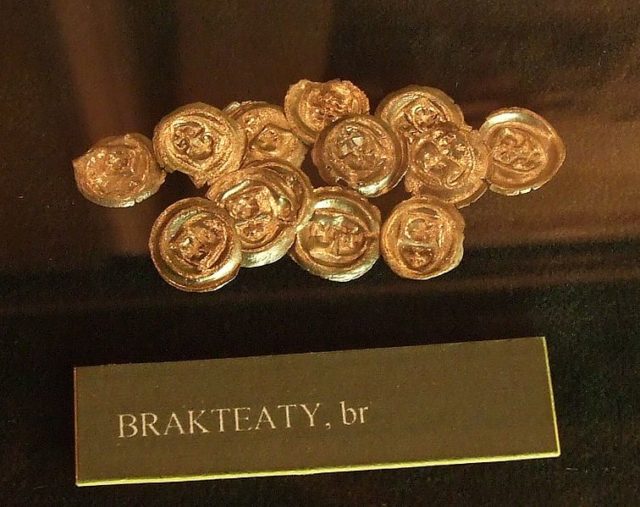 Bracteates originated in fifth century Scandinavia and made their way throughout Europe from England to Hungary. Photo Credit
Bracteates originated in fifth century Scandinavia and made their way throughout Europe from England to Hungary. Photo Credit
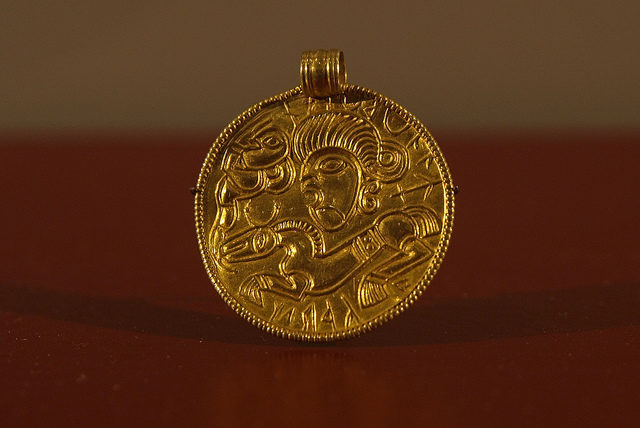 Bracteates from about 500 CE. roskilde town museum, Denmark. Photo Credit
Bracteates from about 500 CE. roskilde town museum, Denmark. Photo CreditThe manufacture of bracteates probably originated with Roman and Byzantine portrait medallions, presented by the emperor as gifts to important figures. Many of the bracteates feature ruler portraits of Germanic kings with characteristic hair that is plaited back and depictions of figures from Germanic mythology influenced to varying extents by Roman coinage while others feature entirely new motifs.
The motifs are commonly those of Germanic mythology and some are believed to be Germanic pagan icons giving protection or for divination.
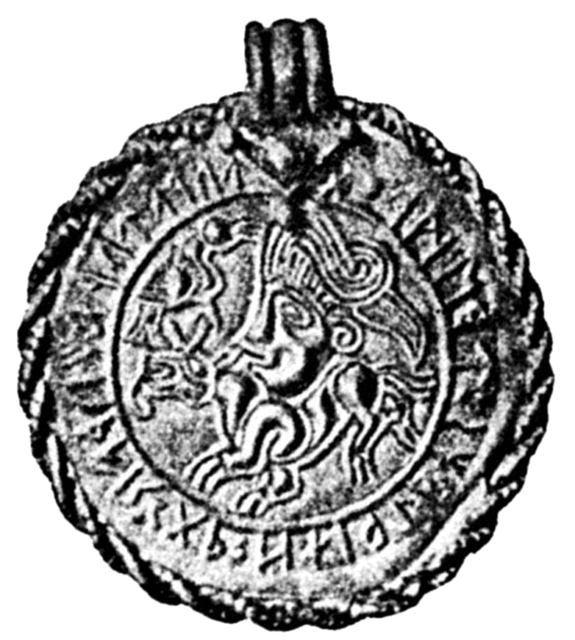 The Vadstena bracteate, a typical C-bracteate. Photo Credit
The Vadstena bracteate, a typical C-bracteate. Photo Credit
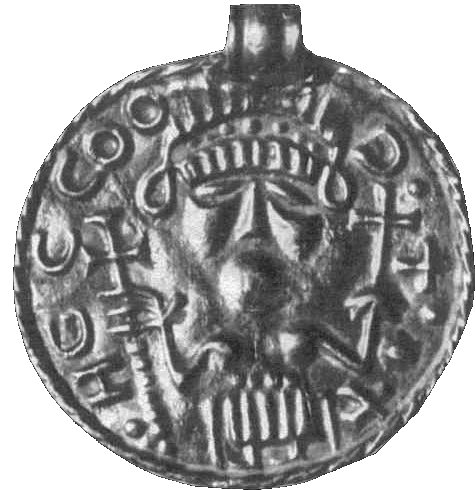 B-bracteate of the B7 or “Fürstenberg” type, found in Welschingen (IK 389), interpreted as depicting Frija-Frigg. Photo Credit
B-bracteate of the B7 or “Fürstenberg” type, found in Welschingen (IK 389), interpreted as depicting Frija-Frigg. Photo CreditThe diameter of the bracteates can vary from 10 to 50 mm and the weight is mostly between 0.05 and 1.00 g. They are only 0.05–0.20 mm thin, making them the most fragile coins in monetary history.
Although the leaf-thin bracteates are the most fragile coins in monetary history, they were the main coinage for almost two centuries (1140–1320) in large parts of medieval Europe – especially in Sweden, Norway, Germany, Bohemia, Poland, Switzerland, Moravia and the Baltic countries.
Bracteates were issued for local circulation, but they never achieved acceptance in economically developed regions. The decline of the bracteates as the main coinage and short-lived coins, in general, depended on developing economies, growing cities and increased local and inter-regional trade.
When monetization increased, and it became harder to handle re-coinage (around 1300), the bracteates lost their function as the principal coin.
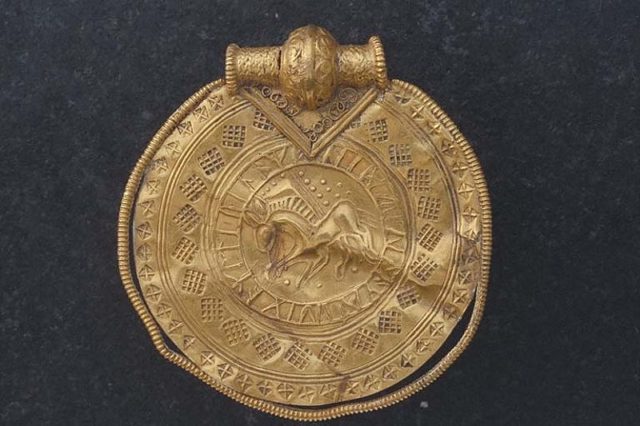 They were the main coin type for almost two centuries in large parts of medieval Europe. Photo Credit
They were the main coin type for almost two centuries in large parts of medieval Europe. Photo Credit
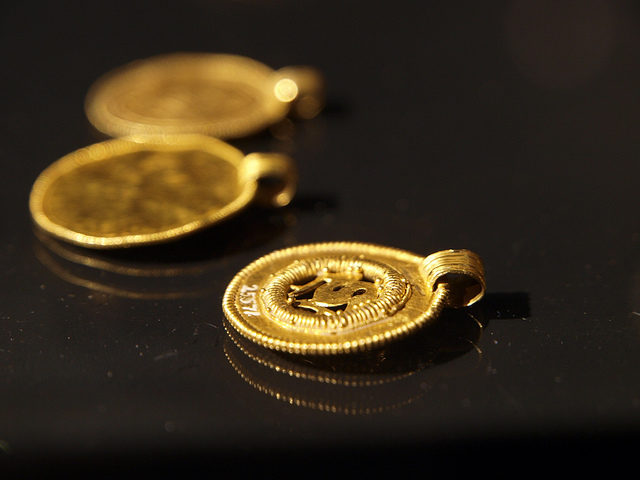 Bracteates/Lund University History Museum, Lund, Sweden. Photo Credit
Bracteates/Lund University History Museum, Lund, Sweden. Photo CreditFor several decades, the basic reference work on bracteates was by Mogens Mackeprang, who published a catalog of them arranged geographically.
Read another story from us: Roman coins discovered buried underneat...
In the 1960s, the German historian Karl Hauck, German runologist Klaus Düwel, and Danish archaeologist Morten Axboe have worked to create a complete corpus of the early Germanic bracteates from the migration period, complete with large-scale photographs and drawings.














Pentru a putea adăuga comentarii trebuie să fii membru al altmarius !
Alătură-te reţelei altmarius